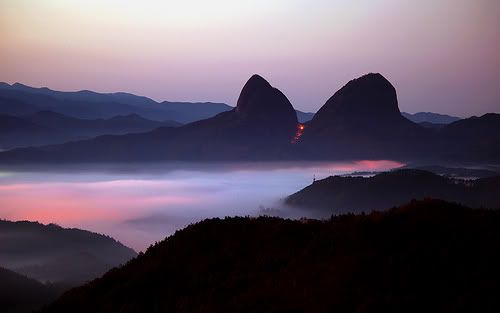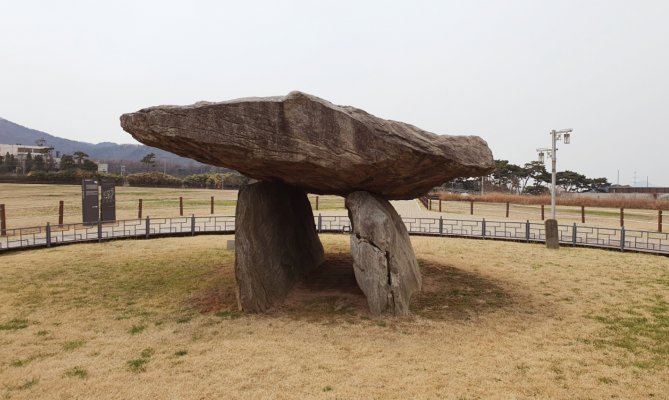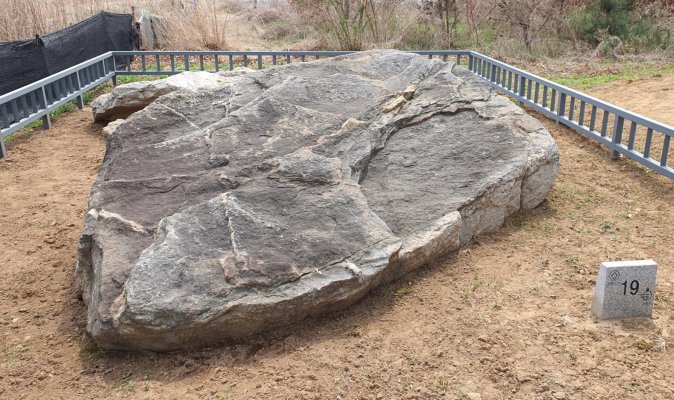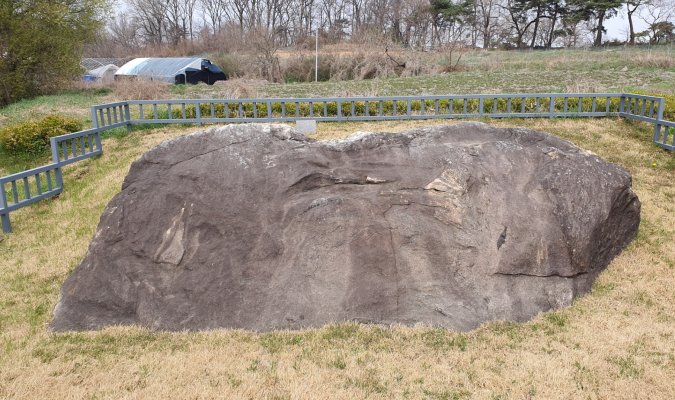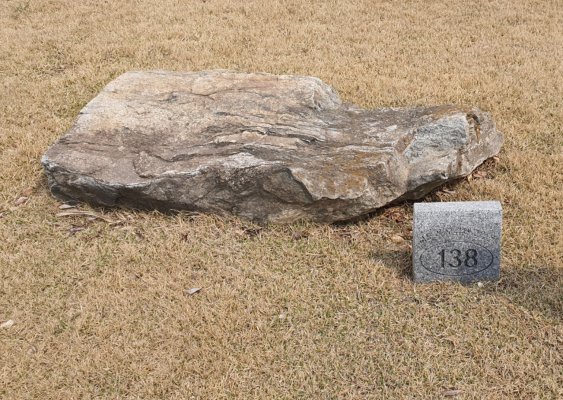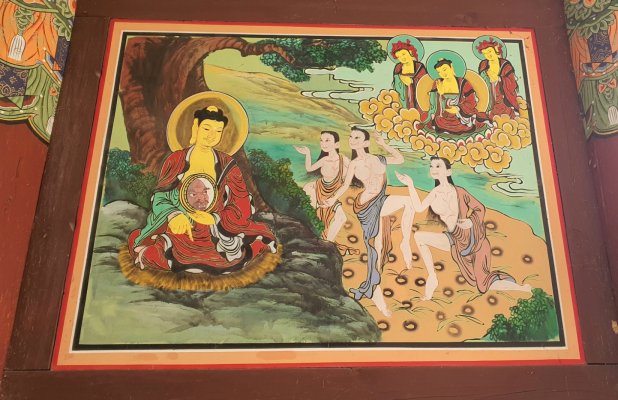skinny
Nigh
- Joined
- May 30, 2010
- Messages
- 8,821
1.Shifting / vanished river; Gyeongju City outskirts
On my first trip to Korea last century, I literally stumbled upon an archeological site over 500 years old called Poseokjeong. It features a carved stone trough which originally decanted water from a neighbouring river just next to it.
Interestingly, the river is now nowhere to be seen. Obviously shifts in riverbeds can occur due to engineering and natural erosion, but this seems a rather short period for such a large shift in distance. I assume it was engineered out of existence, but the locals seemed mystified by the question - not an uncommon occurence when interrogating Koreans.
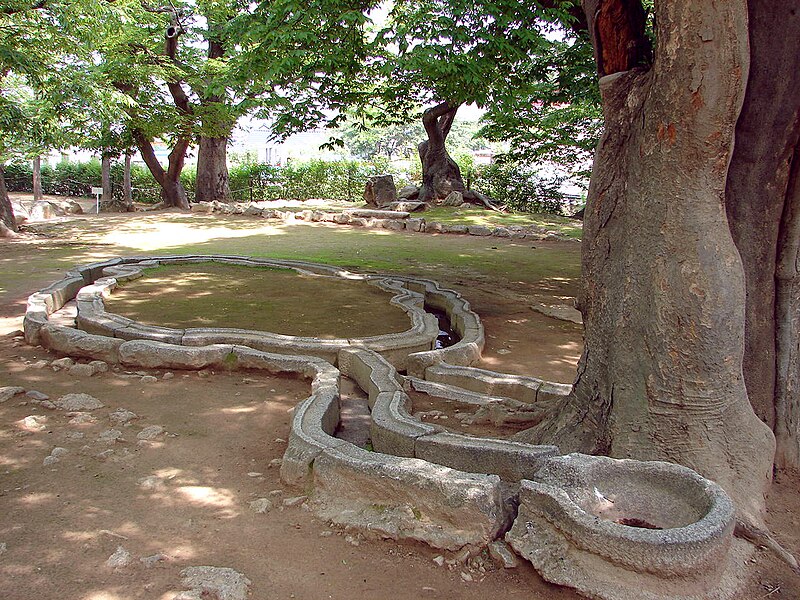
2. Tapsa Temple at Maisan (Horse Ears Mountain); South Cheolla Province
This was a place I really started to question my own sanity. I had had food poisoning overnight and was slightly giddy to begin with, but this place blew me away. At the turn of the 19th century, a single monk constructed over 120 stone towers, some rising as high as 10 metres, without mortar or mechanical devices of any kind. The task apparently took 30 years.
Again, to quote the wiki:
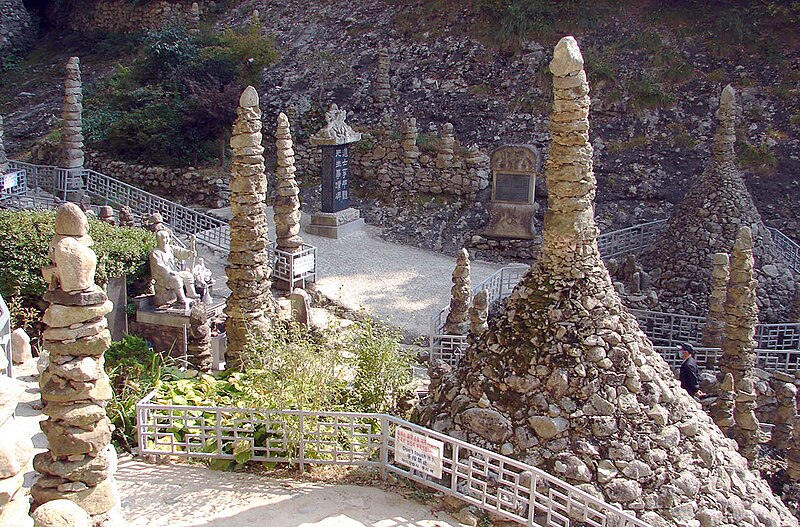
There's some brief video of the place here at Youtube too. Gives a little better impression of scale.
Local legend has it that he was able to move the large capstones into place by the power of his mind, and that he was able to place structures in the caves in the sheer cliff walls 40 metres above the ground using his ability to fly. Scaffolding was the first thing that occured to me there and then, but my host's sincerity in explaining Yi's abilities was most convincing - and he was a trusted friend with a very credulous attitude towards most things. He was very matter of fact about it and I felt my mind start to widen a little. It has since safely locked out subsequent entertainment of any explanation beyond the physically provable, of course.
An associated local legend concerns the phenomenon of the anti-gravity icicles in the nearby Buddhist temple. Apparently when monks pray over bowls of water an icicle will grow diagonally up from the surface overnight. I've seen photographs of the icicles in the bowls (before the digital enhancement was available) and it looked quite intriguing. There's no accounting of the process in the pictures of course, so I tend to remain sceptical of the formation - they could simply have been formed deliberately by human manipulation before the photo was taken. The place certainly has an 'air' about it though and is highly recommended on a trip to the far east... as is Korea itself. A wonderful country to visit.
Will add to this as I have time.
On my first trip to Korea last century, I literally stumbled upon an archeological site over 500 years old called Poseokjeong. It features a carved stone trough which originally decanted water from a neighbouring river just next to it.
During banquets in the last days of the Silla kingdom, the king's official and noble guests would sit along the watercourse, chatting and reciting poetry, engaged in drinking games. One of the guests would start by enunciating a line of poetry, challenge one of the other guests to compose an appropriate second line while floating of cup wine in the water. Due to the variety of curves in the channel, the speed the wine cups transversed the course was influenced by the shape of the cup, rate of the water flow and the level of the wine in the cup.[2] Should the cup of wine reach the guest before he could submit a suitable subsequent line he must consume that entire cup of wine and try again, and again, until the task was accomplished.[3]
Source: Wikipedia: Poseokjeong
Interestingly, the river is now nowhere to be seen. Obviously shifts in riverbeds can occur due to engineering and natural erosion, but this seems a rather short period for such a large shift in distance. I assume it was engineered out of existence, but the locals seemed mystified by the question - not an uncommon occurence when interrogating Koreans.

2. Tapsa Temple at Maisan (Horse Ears Mountain); South Cheolla Province
This was a place I really started to question my own sanity. I had had food poisoning overnight and was slightly giddy to begin with, but this place blew me away. At the turn of the 19th century, a single monk constructed over 120 stone towers, some rising as high as 10 metres, without mortar or mechanical devices of any kind. The task apparently took 30 years.
Again, to quote the wiki:
Yi Gap Yong constructed the stone pagodas here incorporating the eight progressive positions of Zhuge Liang. Using this method, stones are first laid in a circular configuration before placing additional stones inside this circle. More stones are then placed in position to form a conical pyramid.
This structure is next topped off with a flat-shaped stone. To complete the pagoda another flat stone, in a yin and yang order, is added over and over until the desired shape and height of the tower is achieved.
Small pebbles are placed in the gaps between the larger stones to make the tower more stable.
Yi Gap Yong piled all of the stones, one by one, without the aid of mechanical devices or assistance. The stones for the smaller pagodas were all obtained locally but many for the larger pagodas, which can reach as high as 9m/30 ft, were gathered from the streams, rivers and mountains throughout Korea to assure their harmony with their spiritual energy.[2]

There's some brief video of the place here at Youtube too. Gives a little better impression of scale.
Local legend has it that he was able to move the large capstones into place by the power of his mind, and that he was able to place structures in the caves in the sheer cliff walls 40 metres above the ground using his ability to fly. Scaffolding was the first thing that occured to me there and then, but my host's sincerity in explaining Yi's abilities was most convincing - and he was a trusted friend with a very credulous attitude towards most things. He was very matter of fact about it and I felt my mind start to widen a little. It has since safely locked out subsequent entertainment of any explanation beyond the physically provable, of course.
An associated local legend concerns the phenomenon of the anti-gravity icicles in the nearby Buddhist temple. Apparently when monks pray over bowls of water an icicle will grow diagonally up from the surface overnight. I've seen photographs of the icicles in the bowls (before the digital enhancement was available) and it looked quite intriguing. There's no accounting of the process in the pictures of course, so I tend to remain sceptical of the formation - they could simply have been formed deliberately by human manipulation before the photo was taken. The place certainly has an 'air' about it though and is highly recommended on a trip to the far east... as is Korea itself. A wonderful country to visit.
Will add to this as I have time.


